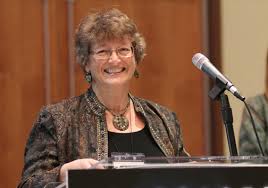Bones to butterflies

Jew in the Christian world
Family Education with Candace R. Kwiatek, The Observer
“Toe bone connected to the foot bone, foot bone connected to the heel bone…” Inspired by the prophet Ezekiel’s visit to the Valley of Dry Bones (Ezek. 37), the lyrics of this spiritual offer a lively invitation to explore eschatology: the theology of the end times.
This futuristic era first appears in Genesis (49:1): “And Jacob called unto his sons, and said: ‘Gather yourselves together, that I may tell you that which shall befall you in the end of days.’”
The prophets established the main tenets of Jewish eschatology that were further developed by the rabbis of the Talmud.
While there is no unanimity about the specific events, traditional Judaism generally describes a sequential, non-cataclysmic process: a messianic herald, the coming of the Messiah, resurrection of the dead, final judgment, and the world to come.
Elijah. In the closing verses of Malachi (3:23), Elijah is characterized as the herald of the Messiah: “Lo, I will send the prophet Elijah to you before the coming of the awesome, fearful day of the Lord.”
Our sages wondered: Would Elijah announce the imminent arrival or reveal the Messiah’s actual presence? Would Elijah engage in peacemaking during the last days — a time of social turmoil, economic disaster, despotic governments, and Israel’s final war with its enemies, the metaphorical Gog and Magog, in preparation for the Messiah’s arrival — or simply highlight the Messiah’s actions as a peacemaker?
Messiah. Unlike the divine deliverer or sacrificial savior of Christianity, the Jewish Messiah, literally anointed one, is a human being. A charismatic leader and living example of Jewish teachings, the Messiah will redeem the people Israel and bring about the perfection of the world in an era known as the Messianic Age.
According to our sages, he will come either when he is most needed (an overwhelmingly evil world) or when he is most deserved (an exceptionally good world).
Resurrection. The only Jewish end-of-times doctrine has been physical resurrection of the dead. With biblical roots in Ezekiel, resurrection attests to God’s promise that the Jewish people will literally come to life again. It also reinforces the notion of God’s ultimate justice, enabling all the righteous throughout history, not just those alive at the time of redemption, to share in the world to come. It also reflects the Jewish understanding that the body and soul work in tandem: alone, neither can sin nor be righteous.
Judgment. The Book of Daniel (12:2) describes judgment following resurrection: “Multitudes who sleep in the dust of the earth will awake: some to everlasting life, others to shame and everlasting contempt.”
Many of our sages pondered the time between death and judgment. Shammai determined that the dead remain inactive in the grave or a “pit” until resurrection, a view echoed centuries later by Saadiah Gaon.
Hillel argued that souls are immediately punished or rewarded after death, then resurrected for a final judgment at the end of times.
Ultimately, all the righteous are rewarded in Paradise, a place of bliss and spiritual perfection; the wicked are temporarily punished in Gehinnom, variously described as a place for soul-searching and remorse or a fiery punishment pit; and the truly evil are either permanently incarcerated there or destroyed.
Olam haba. Not to be confused with the Messianic Age, olam haba (the world to come) is the eternal spiritual afterlife and the completion of Creation.
Christian eschatology is not so straightforward. Despite shared roots in both Jewish and Christian biblical texts, Christian denominational views differ significantly. Here’s a brief summary of key concepts, with no sectarian distinctions. Jesus as Messiah ushered in an era of Christian believers known as the Church Age. It will come to an end with the Rapture, when all believers living and dead are physically resurrected to Heaven with the Second Coming of Jesus as Messiah.
Seven years of Tribulation follow, an era of cataclysmic disasters during which a charismatic Antichrist (the Beast, the Devil/Satan), hailed as the world’s savior, tempts humans to destruction and rebellion against biblical values. During this time, a portion of the Jews who are restored to the Land of Israel turn to Jesus as Messiah, and all new believers are resurrected.
The Lord binds up the Antichrist in a bottomless pit during the great battle of Armageddon, followed by 1,000 years of peace and security under the rule of Jesus from Jerusalem. In the waning days of the world, Satan is released from his imprisonment, again deceives the nations of Gog and Magog (East and West), and attempts to destroy the believers and the city of God. In a final battle, the universe is destroyed and Satan is cast into a lake of fire along with all the wicked and non-believers. God creates new heavens and a new earth for eternity.
Jewish and Christian teachings about the purpose and process of the end times are markedly different, their single point of agreement might be summed up by the following metaphor by author Richard Bach: What the caterpillar calls the end of the world the master calls a butterfly.
Literature to share
Noah’s Bark by Stephen Krensky. This fanciful picture book about how the animals got their unique voices is a clever preschooler’s version of the Noah story. Woven throughout the delightfully illustrated tale are the value of community and the significance of one’s own unique attributes. Rich with opportunities for interaction, it works equally well in groups and one on one.
After Abel and other stories by Michal Lemberger. While biblically grounded and historically accurate, Lemberger’s imaginative narratives offer rich and satisfying stories of nine unexpected and mostly unknown biblical women such as the wives of Lot and Haman. For those who love modern midrash and biblical storytelling, this book is a treasure.
To read the complete November 2015 Dayton Jewish Observer, click here.


